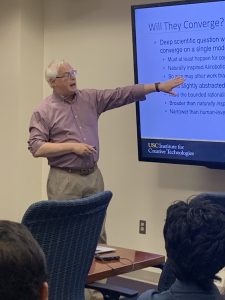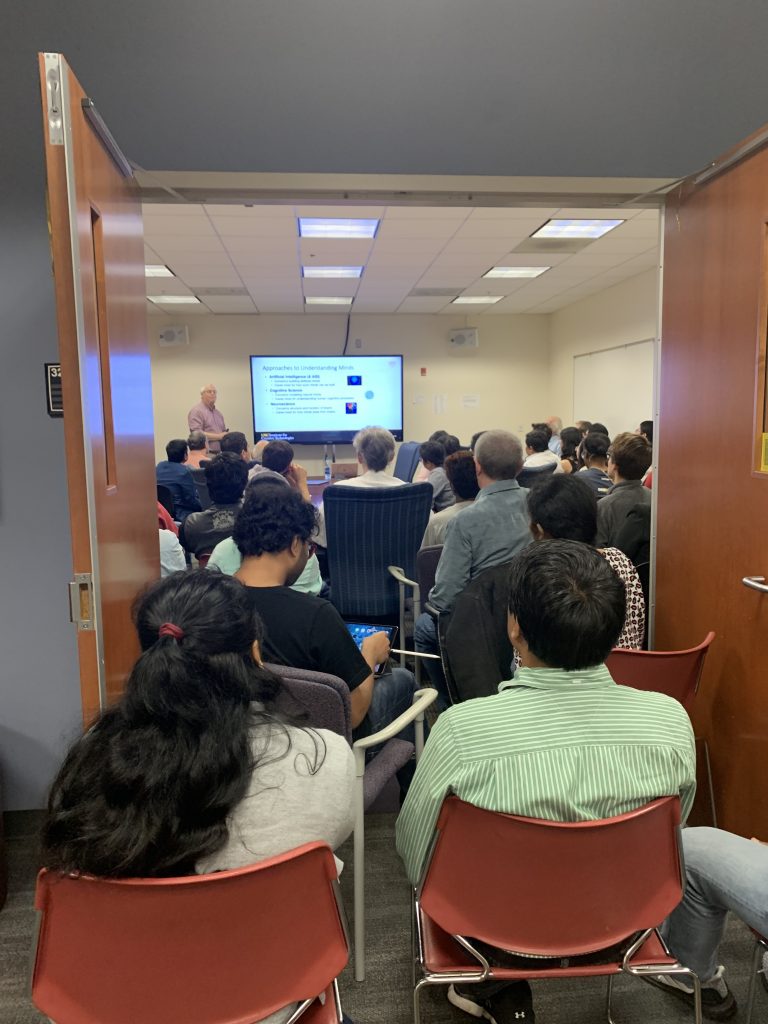

On October 11th, 2019, Dr. Paul Roosenbloom, distinguished speaker from Lockheed Martin delivered a talk on ” Three Related takes on investigating Human-like intelligence”. This talk explored a trio of related takes on how to investigate the nature of human-like intelligence. The first concerns cognitive architectures – implemented models of the fixed structure and processes that yield natural and artificial minds – with a drill down to Sigma, an attempt at a deep synthesis across what has been learned over the past four decades on (what started as) high-level symbolic cognitive architectures versus the low-level graphical/network technologies of probabilistic graphical models (such as Bayesian networks) and neural networks. The second concerns a more abstract attempt at specifying a Common Model of Cognition that yields an evolving community consensus over what must be part of any cognitive architecture for human-like intelligence. The final take concerns an even more abstract (and speculative) attempt at understanding more deeply the space of approaches to intelligence – framed as maps resulting from cross products among core cognitive dichotomies – along with how such maps may help to understand and structure the capabilities required for (human-like) intelligence.
This event was attended by more than 100 members spilling out into the hallway.